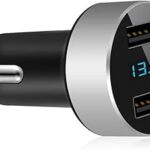Determining if your vehicle is compatible with an OBD2 scanner is crucial for modern car diagnostics and maintenance. With today’s vehicles packed with sophisticated electronics, understanding your car’s onboard diagnostic system can save you time and money. You might be wondering, “What Vehicles Have Obd2?” This guide will clarify OBD2 compatibility, its importance, and how to ensure your car is ready for diagnostic scanning.
Understanding OBD2 and its Importance
Modern cars rely heavily on electronic control units (ECUs) and sensors to manage everything from engine performance to safety features. The On-Board Diagnostics II (OBD2) system is standardized technology mandated in most modern vehicles to monitor these systems. It provides a wealth of data accessible through a universal OBD2 port, typically located under the dashboard.
Why is OBD2 important? It allows car owners and mechanics to:
- Diagnose problems quickly: When a fault occurs, the ECU logs diagnostic trouble codes (DTCs). An OBD2 scanner reads these codes, pinpointing the source of the issue, often indicated by the “check engine light” or other warning lights on your dashboard.
- Save money on repairs: By identifying the problem yourself, you can avoid expensive diagnostic fees at a garage. In many cases, using an OBD2 scanner like Klavkarr can pay for itself after just one use compared to professional diagnostic checks.
- Clear fault codes: Once a problem is resolved, an OBD2 scanner can often clear the stored fault codes and turn off the warning lights, giving you confidence that the issue is truly addressed.
- Monitor vehicle health: Beyond error codes, OBD2 systems provide real-time data on various parameters like engine temperature, speed, and sensor readings, helping you monitor your car’s overall health.
OBD2 Compatibility: A Broad Standard
The good news is that OBD2 compatibility is widespread. Legislation mandates OBD2 (or its European counterpart, EOBD) for most vehicles manufactured after specific dates. This standardization ensures that a single scanner can work across numerous makes and models.
Here’s a general timeline for OBD2 adoption:
- United States: OBD2 has been mandatory for all cars and light trucks sold in the US since 1996.
- Europe (EOBD): EOBD became mandatory for gasoline passenger cars in 2001 and for diesel passenger cars in 2004.
This means if your vehicle was manufactured in or after these periods in these regions, it is highly likely to be OBD2 compliant. However, even vehicles outside these regions and dates may incorporate OBD2 technology.
Extensive Compatibility List: Thousands of Vehicles Tested
To further assist you in determining compatibility, we’ve compiled a list based on data from our users who have tested their vehicles with Klavkarr scanners. This list includes 4601 vehicles tested, encompassing 12195 different types or configurations. This extensive database demonstrates the broad compatibility of OBD2 across a wide range of manufacturers.
Explore OBD2 Compatible Brands (Alphabetical List):
Abarth
Acura
Alfa Romeo
Alpine
Aston Martin
Audi
BMW
BMW Moto
Bentley
Buick
Cadillac
Caterham
Changan
Changhe
Chery
Chevrolet
Chrysler
Citroen
Cupra
DS
Dacia
Daewoo
Daihatsu
Datsun
Dodge
Ducati
Ferrari
Fiat
Fisker
Ford
GMC
Geely
Genesis
Great Wall
Hafei
Holden
Honda
Hummer
Hyundai
Infiniti
Isuzu
Iveco
JAC
Jaguar
Jeep
KTM
Kawasaki
Kia
Lada
Lamborghini
Lancia
Land Rover
Lexus
Lifan
Ligier
Lincoln
Lotus
MAN
MG
Mahindra
Maserati
Mazda
McLaren
Mercedes
Mercury
Mini
Mitsubishi
Morgan
Nissan
Opel
Peugeot
Piaggio
Pontiac
Porsche
Proton
RAM
Renault
Rover
Saab
Samsung
Saturn
Scion
Seat
Secma
Skoda
Smart
Ssangyong
Subaru
Suzuki
Tata
Toyota
Triumph
Vauxhall
Volkswagen
Volvo
Yamaha
Zotye
This extensive list provides a strong indication of the broad reach of OBD2 compatibility. If you see your car brand listed, it’s very likely your vehicle is OBD2 compatible, especially if it’s a newer model.
Don’t See Your Model? How to Double-Check OBD2 Compatibility
While the list above is comprehensive, it’s always wise to confirm OBD2 compatibility for your specific vehicle, especially if your model is older or less common.
Here are a few ways to check:
- Consult your owner’s manual: The vehicle’s owner’s manual usually contains information about OBD2 compliance. Look for sections on diagnostics or emissions control.
- Look for the OBD2 port: The OBD2 port is a standardized 16-pin connector. It’s typically located under the dashboard on the driver’s side. Visually identifying this port is a strong indicator of OBD2 compatibility.
- Online compatibility checkers: Many websites and tools offer OBD2 compatibility lookups based on vehicle year, make, and model. You can use these online resources for a quick check.
- Contact your dealer or manufacturer: If you’re still unsure, contacting your car dealer or the vehicle manufacturer directly is a definitive way to confirm OBD2 compatibility.
Conclusion: Embrace OBD2 for Vehicle Diagnostics
In conclusion, the vast majority of vehicles manufactured from the mid-1990s onwards are OBD2 compatible. This standardized system offers significant benefits for vehicle owners, empowering you to understand your car’s health, diagnose issues, and potentially save money on maintenance. By utilizing an OBD2 scanner, you can take a proactive approach to vehicle care and ensure your car is running smoothly and efficiently. Whether you’re addressing a check engine light or simply monitoring your vehicle’s parameters, OBD2 compatibility is a valuable asset for modern car ownership.
